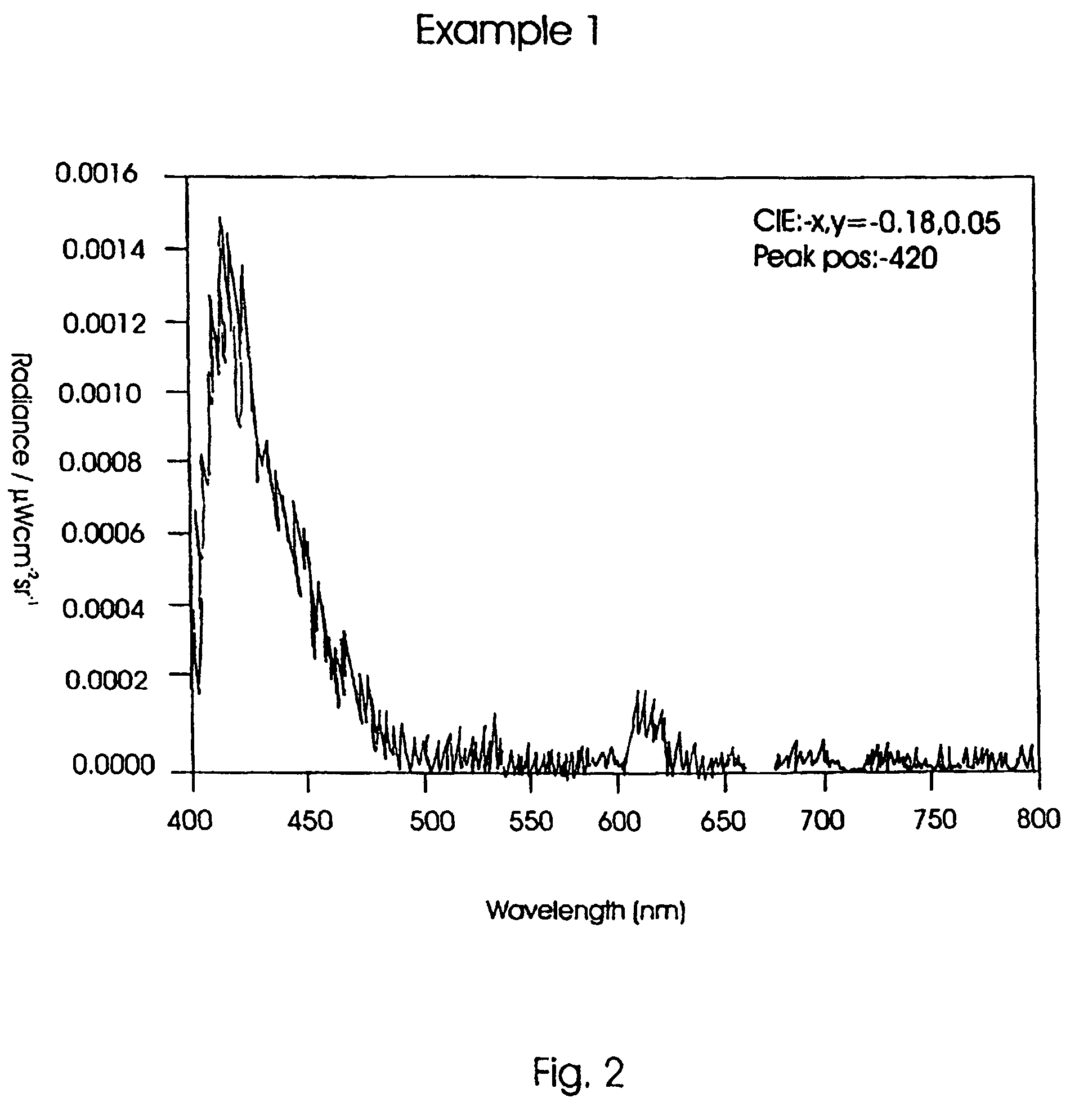Electroluminescent materials
a technology of electroluminescent materials and materials, applied in the direction of luminescnet screens, discharge tubes, natural mineral layered products, etc., can solve the problems of high energy consumption, low quantum-efficiency, and high cost of manufactur
- Summary
- Abstract
- Description
- Claims
- Application Information
AI Technical Summary
Problems solved by technology
Method used
Image
Examples
example 1
[0038]Mono(bathophenanthroline)thorium(IV)chloride. Thorium(IV)chloride (5 mmol. 1.87 g) was dissolved in ethanol / water mixture (2:1 v / v) (75 ml) at 50° C. Bathophenanthroline (5 mmol, 1.66 g) was dissolved in a mixture of ethanol / dichloromethane (2:1 v / v) (75 ml) and added portionwise to the solution of the thorium salt. The mixture was reduced on a hotplate at 100° C. over one hour. The precipitate was filtered to give an off-white solid which was washed with diethylether (2×25 ml) and dried in vacuo to yield the product (1.9 g).
example 2
[0039]Mono(α′, α″, α′″ tripypyridyl)yttrium(III) chloride. Yttrium(III) chloride (2 mmol. 0.61 g) was dissolved in ethanol (100 ml) and α′, α″, α′″ tripyridyl (2 mmol, 0.47 g) was added. The reaction mixture was warmed for 60 minutes at 50° C. and the solvents removed. The residue was washed with diethylether (2×25 ml) and dried in vacuo to give the product (0.80 g).
example 3
[0040]Tris(2,2,6,6-tetramethyl-3,5-heptanedionato)yttrium(III) mono(α′, α″, α′″ tripyridyl). The tris-chelate (1 mmol. 0.64 g) was dissolved in ethanol (100 ml) and α′, α″, α′″ tripyridyl (1 mmol, 0.23 g) was added. The reaction mixture was warmed for 60 minutes at 50° C. and the solvents removed. The residue was washed with diethylether (2×25 ml) and dried in vacuo to give the product (0.50 g). Yield 57%.
PUM
| Property | Measurement | Unit |
|---|---|---|
| Fraction | aaaaa | aaaaa |
| Percent by mass | aaaaa | aaaaa |
| Fraction | aaaaa | aaaaa |
Abstract
Description
Claims
Application Information
 Login to View More
Login to View More - R&D
- Intellectual Property
- Life Sciences
- Materials
- Tech Scout
- Unparalleled Data Quality
- Higher Quality Content
- 60% Fewer Hallucinations
Browse by: Latest US Patents, China's latest patents, Technical Efficacy Thesaurus, Application Domain, Technology Topic, Popular Technical Reports.
© 2025 PatSnap. All rights reserved.Legal|Privacy policy|Modern Slavery Act Transparency Statement|Sitemap|About US| Contact US: help@patsnap.com



